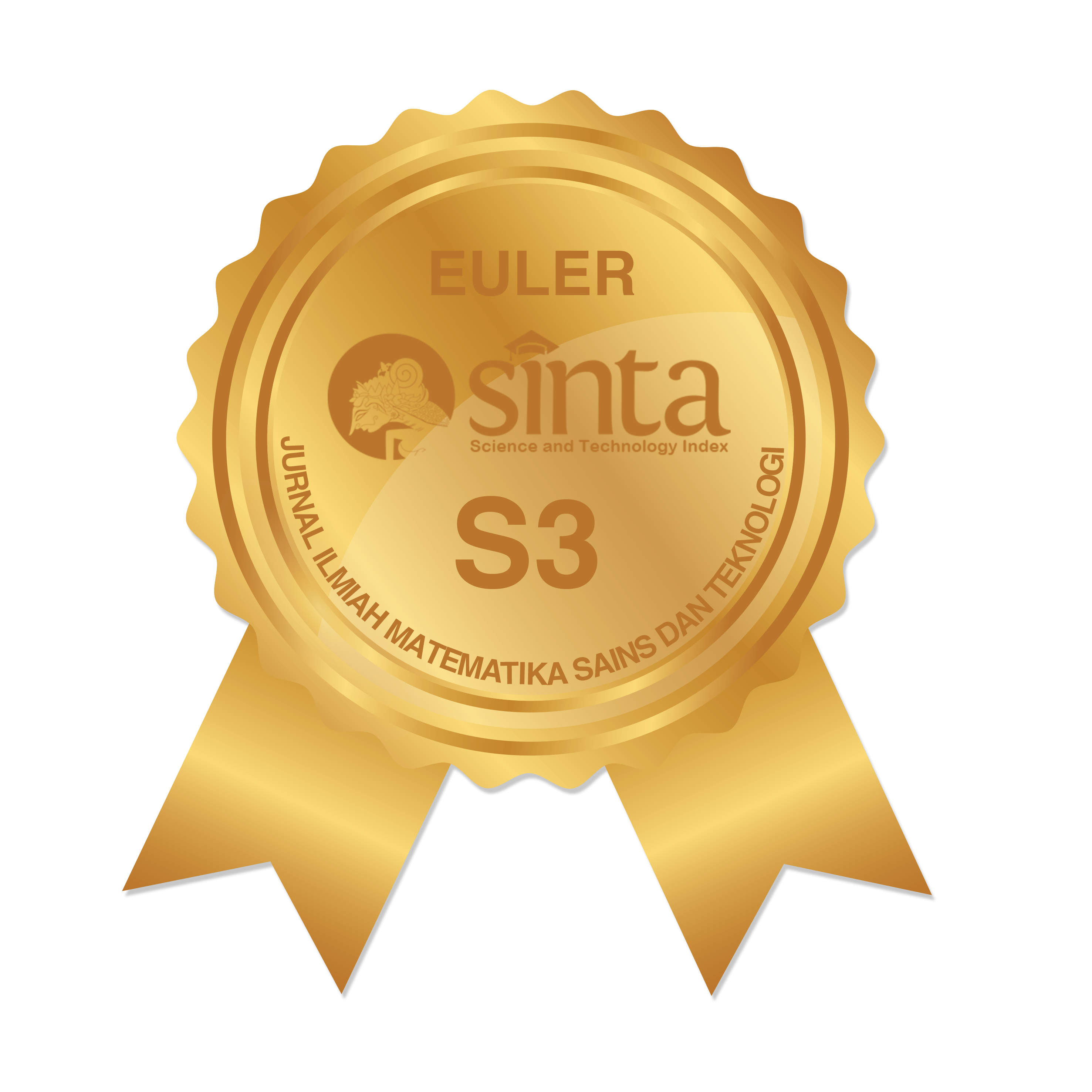Karateristik Sifat Fisika dan Mekanika Papan Laminasi Kayu Sengon dan Kayu Bayur
Abstract
Keywords
Full Text:
PDFReferences
I. Iskandar, "Pemanfaatan Kayu Hutan Rakyat Sengon (Paraserianthes Falcataria (1) Nielsen) Untuk Kayu Rakitan" Prosiding Seminar Litbang Hasil Hutan, 2006.
B. Anshari, "Pengaruh Variasi Tekanan Kempa Terhadap Kuat Lentur Kayu Laminasi Dari Kayu Meranti dan Keruing" Jurnal Civing Engineering Dimension, vol. 8, pp. 25-33, 2006.
D. Purwanto, "Pembuatan Balok Dan Papan Dari Limbah Industri Kayu. Balai Riset Dan Standardisasi Industri Banjarbaru" Jurnal Riset Industri, vol. 5, pp. 13-20, 2011.
F. T. Wulandari, "Papan Komposit: Produk Hasil Hutan yang Ramah Lingkungan" Jurnal Sangkareang Mataram, vol. 1, no. 2, 2015.
P. Gunawan, "Pengaruh Jenis Perekat Terhadap Keruntuhan Geser Balok Laminasi Gaar dan Bilah Vertikal Bambu Petung" Jurusan Teknik, Universitas Sebelah Maret Surakarta, Surakarta, 2007.
I. Risnasari, I. Azhar, and A. N. Sitompul, "Karakteristik Balok Laminasi dari Batang Kelapa (Cocos nucifera L.) dan Kayu Kemiri (Aleurites moluccana wild.)" FORESTA Indonesian Journal of Forestry, vol. 1, no. 2, pp. 79-87, 2012.
E. Herawati, M. Y. Massijaya, and N. Nugroho, "Karakteristik Balok Laminasi Dari Kayu Mangium (Acacia Mangium Willd.)" Jurnal Ilmu Dan Teknologi Hasil Hutan, vol. 1, pp. 1-8, 2008.
K. A. Hanafiah, Rancangan Percobaan. Jakarta: PT. Raja Grafindo Persada, 2016.
W. Widiati, K. Yuli, B. Supraptono, and A. B. Y. Tripratono, "Karakteristik Sifat Fisika dan Mekanika Kayu Lamina Kombinasi Jenis Kayu Sengon (Paraserianthes falcataria (L.) Nilsen) dan Jenis Kayu Merbau (Intsia Spp.)" Jurnal Hutan Tropis, vol. 2, no. 2, pp. 93-97, 2018.
A. H. Iswanto, "Sifat Fisika Kayu: Berat Jenis dan Kadar Air pada beberapa Jenis Kayu" Universitas Sumatra Utara, Medan, 2008.
Mutiara, "Sifat Fisika Dan Mekanika Glulam Dari Kayu Sengon (Paraserianthes Falcataria) Berdasarkan Arah Serat Kayu" Universitas Mataram, Mataram, 2021.
P. Jihannanda, "Studi Kuat Lentur Balok Glulam Kayu Sengon dengan Kayu Kelapa di Daerah Gunung Pati Semarang" Universitas Negeri Semarang, Semarang, 2013.
D. Islamiyanti, "Sifat Fisika Glulam Dari Potongan Kayu Rajumas (Duabang Mollucana)" Universitas Mataram, Mataram, 2021.
K. Kasmudjo, Pengantar Teknologi Hasil Hutan Bagian V Papan Tiruan Lain. Yogyakarta: Yayasan Pembina Fakultas Kehutanan Universitas Gadja Mada, 2001.
T. Sucipto, "Stabilitas Dimensi kayu" Universitas Sumatra Utara, Medan, 2009.
D. A. R. Ginting, "Balok Laminasi dengan Kombinasi dari Batang Kelapa Sawit (Elaeis guineensis Jacq.) dan Kayu Mahoni (Swetenia mahagoni)" Universitas Sumatera Utara, Medan, 2012.
J. G. Haygreen and J. L. Bowyer, Bidang Orientasi Kayu. Yogyakarta: Gadjah Mada University Press, 2009.
A. Adurrachman and N. Hadjib, "Sifat Fisik dan Mekanik Kayu Lamina Campuran Kayu Mangium dan Sengon" Jurnal Penelitian Hasil Hutan, vol. 27, no. 3, pp. 191-200, Sep. 2008.
J. Malik and A. Santoso, "Keteguhan Lentur Statis Lamina Dari Tiga Jenis Kayu Limbah Pembalakan Hutan Tanaman" Jurnal Penelitian Hasil Hutan, vol. 23, pp. 13-20, 2005.
R. J. P. Sari, "Karakteristik Balok Laminasi dari Kayu Sengon (Paraserianthes falcataria (L.) Nielson), Manii (Maesopsis eminii Wild.) dan Akasia (Acacia mangium Engl.)" Institut Pertanian Bogor, Bogor, 2011.
S. Rachmad, "Sifat Fisika Dan Mekanika Papan Laminasi Silang Kayu Mindi (Melia Azedarach Linn) Menggunakan Perekat Isosianat" Institut Pertanian Bogor, Bogor, 2013.
DOI: https://doi.org/10.34312/euler.v10i1.13961
Refbacks
- There are currently no refbacks.
Copyright (c) 2022 Febriana Tri Wulandari, Radjali Amin, Raehanayati Raehanayati

This work is licensed under a Creative Commons Attribution-NonCommercial 4.0 International License.
Euler : Jurnal Ilmiah Matematika, Sains dan Teknologi has been indexed by:
EDITORIAL OFFICE OF EULER : JURNAL ILMIAH MATEMATIKA, SAINS, DAN TEKNOLOGI |
 | Department of Mathematics, Faculty of Mathematics and Natural Science, Universitas Negeri Gorontalo Jl. Prof. Dr. Ing. B. J. Habibie, Tilongkabila, Kabupaten Bone Bolango 96554, Gorontalo, Indonesia |
 | Email: [email protected] |
 | +6287743200854 (WhatsApp Only) |
 | Euler : Jurnal Ilmiah Matematika, Sains dan Teknologi (p-ISSN: 2087-9393 | e-ISSN:2776-3706) by Department of Mathematics Universitas Negeri Gorontalo is licensed under a Creative Commons Attribution-NonCommercial 4.0 International License. Powered by Public Knowledge Project OJS. |














